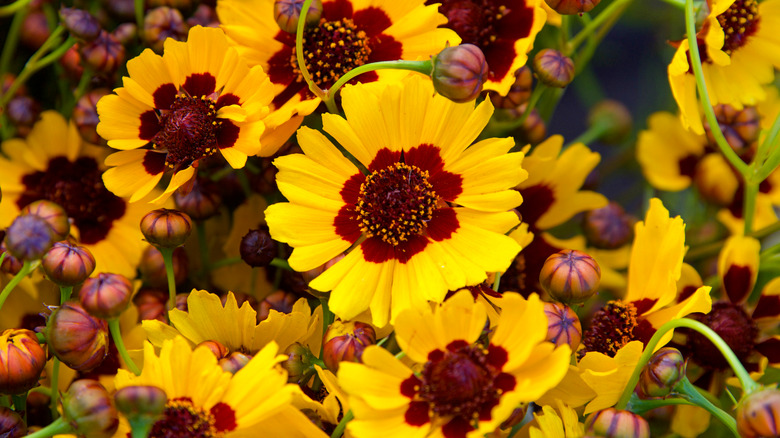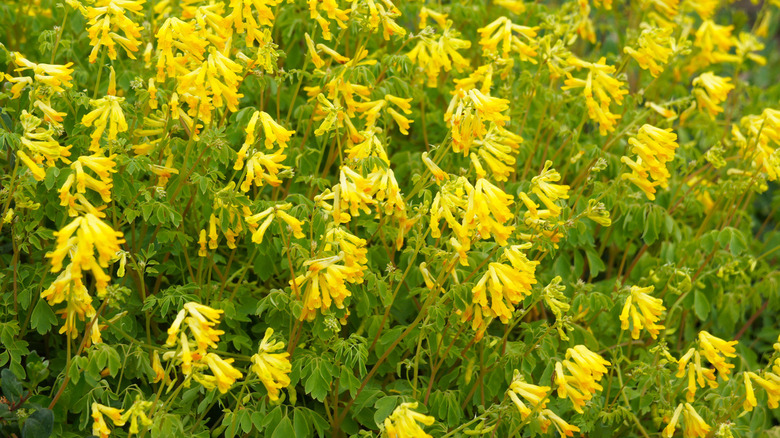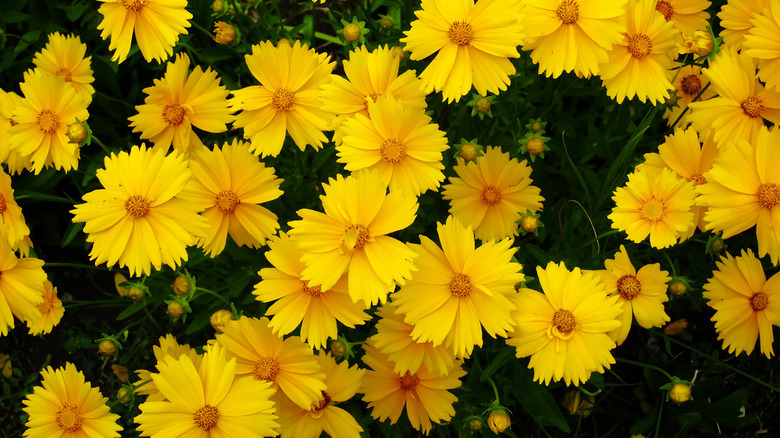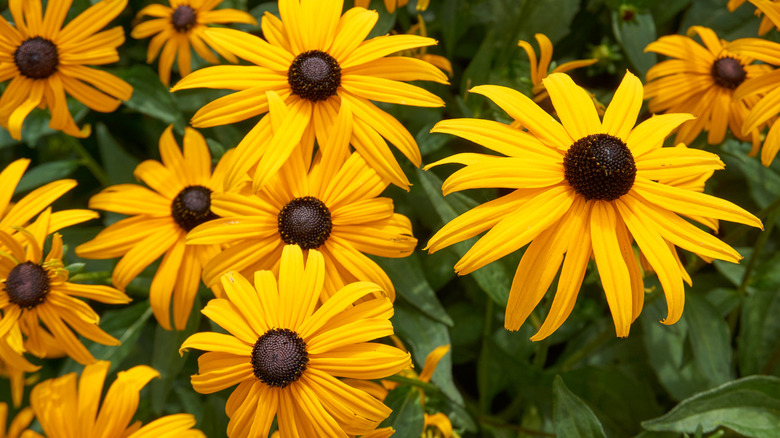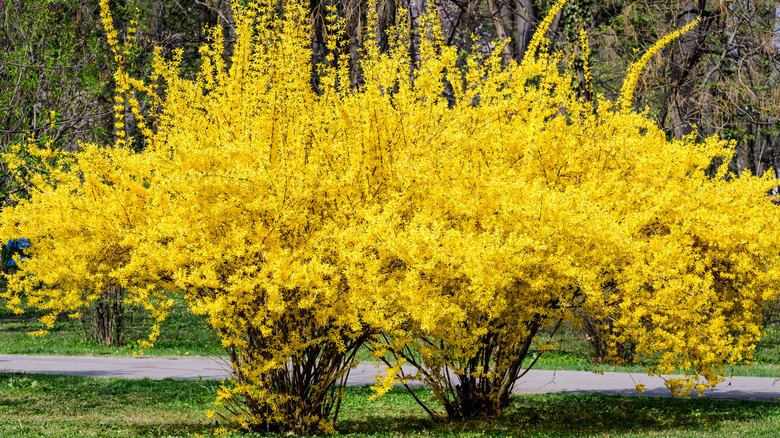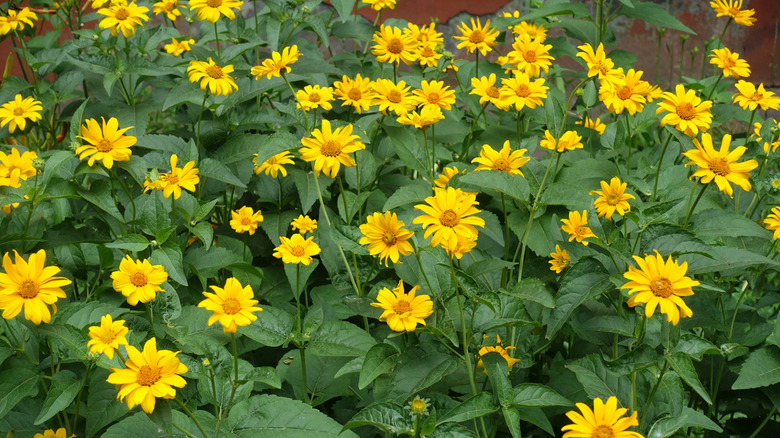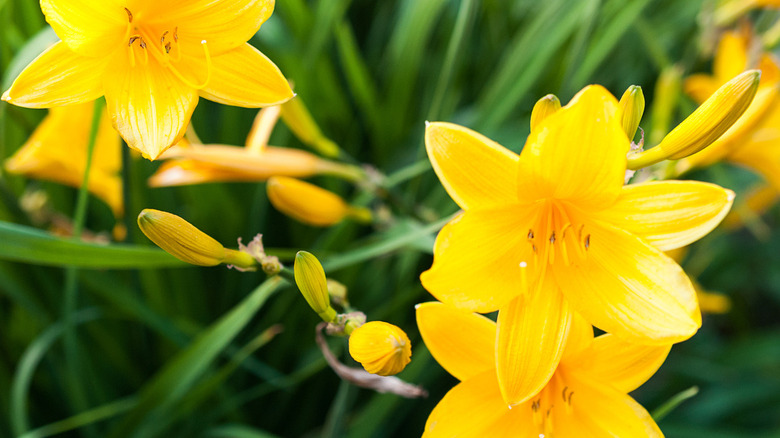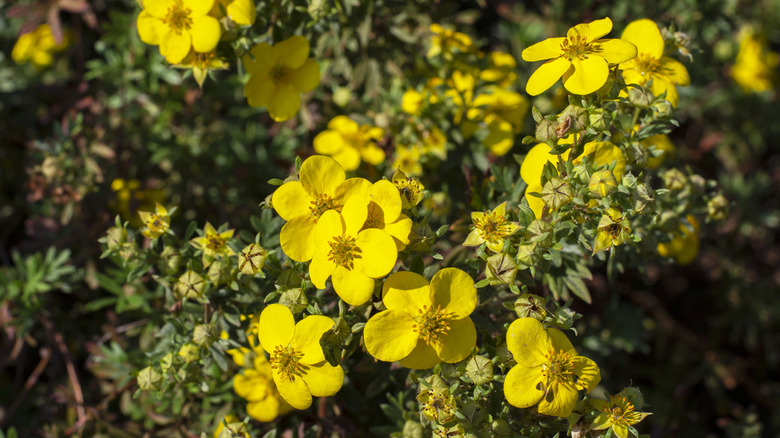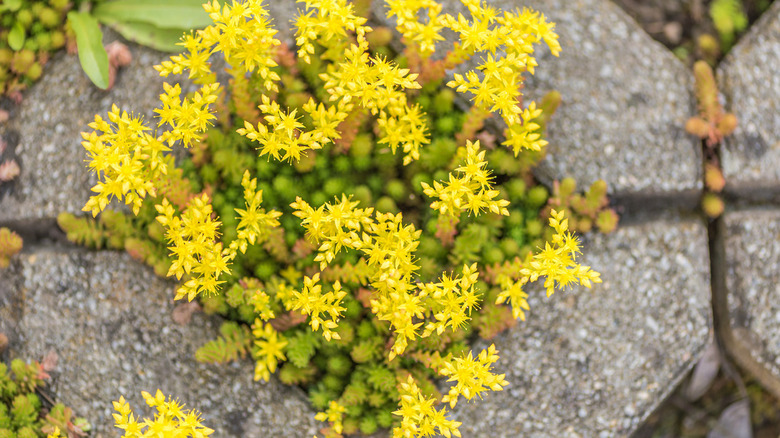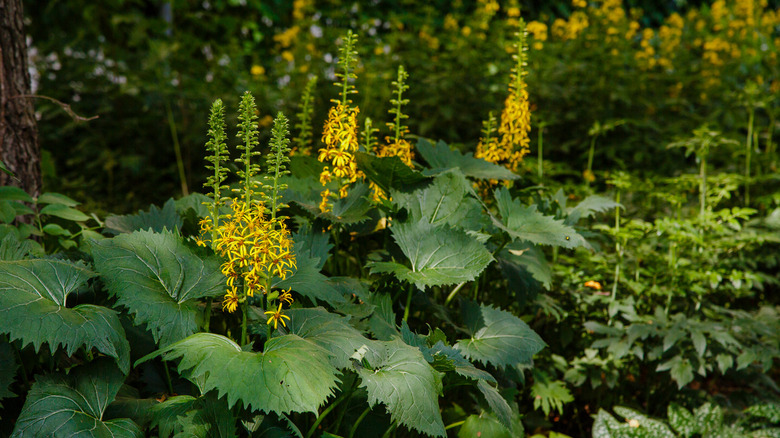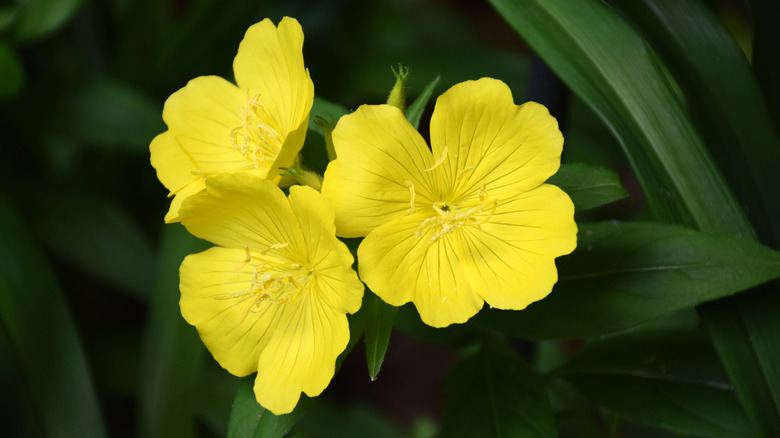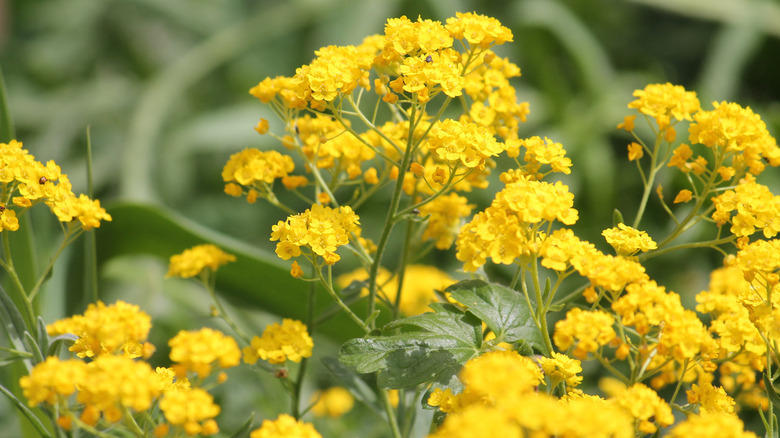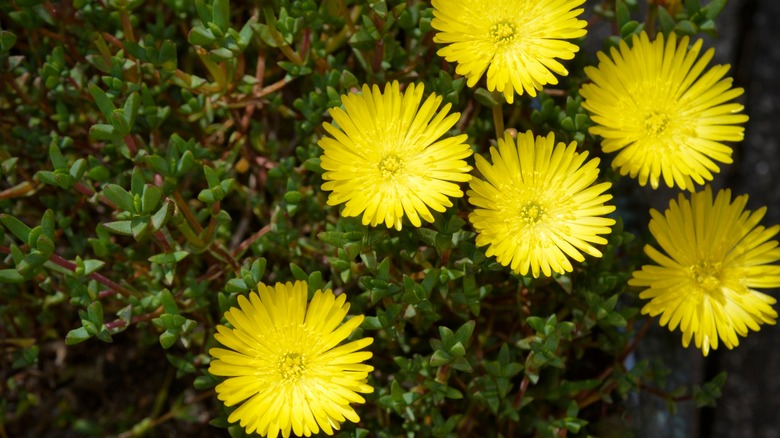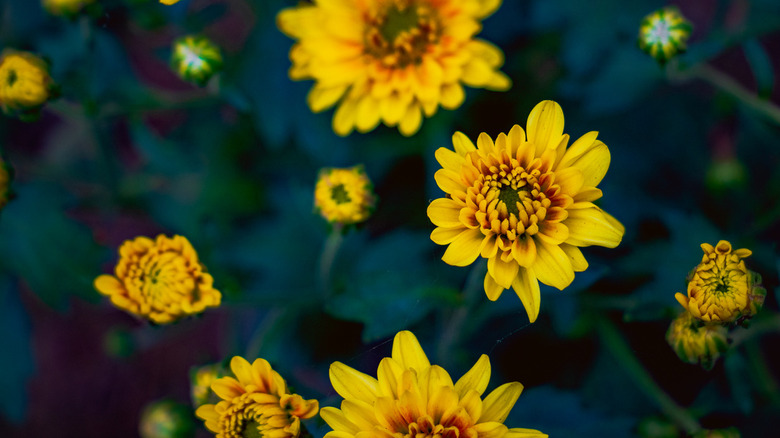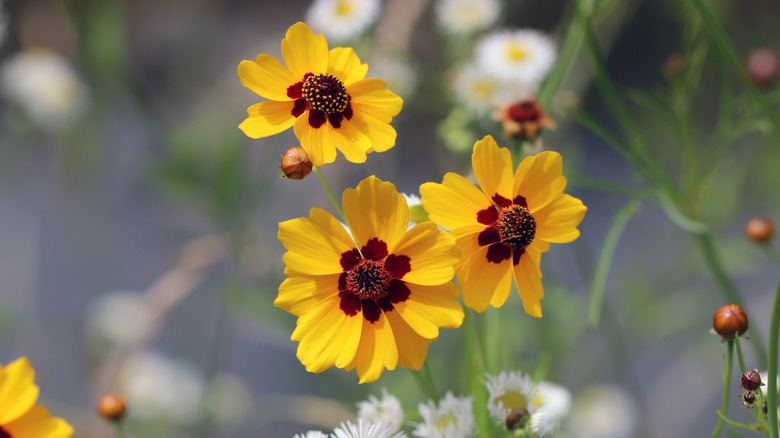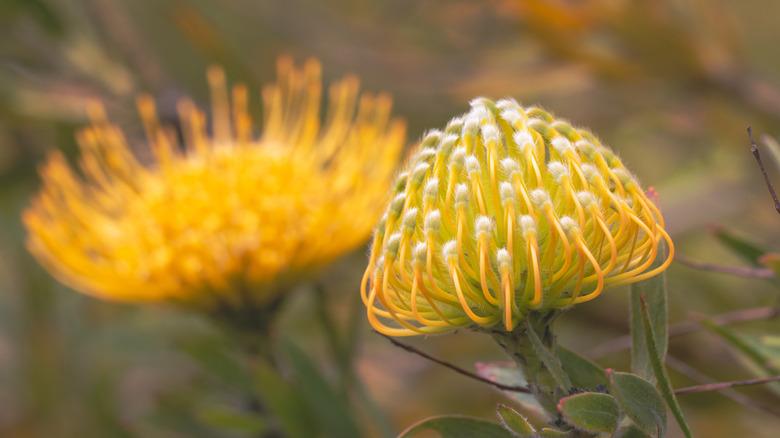15 Perennials That Bloom With Bright Yellow Flowers
If you plan to add new plants to your garden or indoor plant collection, it is easy to get lost because of the variety of options at your disposal. However, in order to make a bold statement and also introduce some drama to your garden or indoor space, you will need plants that bloom with colorful flowers. While there are plenty of color options, it is hard to beat the appeal of a pretty yellow flower. Yellow perennials will not only introduce the much-needed color to the layout but will also come back year after year (via the University of Florida Extension).
There are plenty of beautiful yellow variations right from mild mellow to downright vibrant. All you have to do is find the right balance that works for the specific appeal you intend to achieve. However, it is worth mentioning that to achieve the boldest statement, you need to consider introducing plenty of varieties, from the size of the plant down to the texture. The beauty of this is that you will also find the right shade of yellow to match. So, take a look at these perennials that will grace your landscape with yellow blooms every year.
1. Corydalis
One of the attractive features of corydalis (Pseudofumaria lutea) is their visual appeal even when not in bloom. Another unique characteristic is their extra-long blooming period from mid-spring to fall. However, their ornamental value gets even better thanks to the bright yellow flowers that are made to impress (via the University of Wisconsin-Madison).
Bloom Season: Spring to fall
USDA Growing Zone: 5-7
Growing Conditions: Full to partial shade
Soil Type: Moist, well-draining soil
Size: Up to 15 inches tall
2. Coreopsis
If you are looking for an extremely tough plant that will also bring the warmth of yellow blooms as well, consider the coreopsis (Coreopsis lanceolata). Other than the bright flowers, part of the attractive features of this plant is that it is easy to maintain. What's more, they grow relatively fast, blooming within the first year, mentions Michigan State University.
Bloom Season: Summer to fall
USDA Growing Zone: 2-11
Growing Conditions: Full sun
Soil Type: Sandy, well-draining soil
Size: 1-2 feet tall and 1-2 feet wide
3. American gold rush
The American gold rush, better known as the black-eyed Susan or Rudbeckia hirta, is a perennial native to the central U.S. It tolerates hot summers and mild neglect once established, making it ideal and relatively easy to maintain. This plant is popular for its daisy-like yellow flower with a signature dark center. According to the Missouri Botanical Garden, the American gold rush thrives perfectly in large containers and as perennial borders.
Bloom Season: Summer to fall
USDA Growing Zone: 3-9
Growing Conditions: Full sun
Soil Type: Neutral, well-draining soil
Size: 1-2 feet tall and 1-2 feet wide
4. Forsythia
Forsythia (Forsythia spp.) is a perennial shrub known for bursting into yellow flowers just before its leaves disappear. Although it is relatively tolerant to short bouts of drought once established, it's quite adaptable to different growing conditions. According to the University of Minnesota Extension, this plant produces a lot of branches; therefore, it is ideal to prune regularly to maintain an attractive shape. The forsythia will reward you with plenty of colors during spring.
Bloom Season: Spring
USDA Growing Zone: 5-8
Growing Conditions: Full sun
Soil Type: Moist, well-draining soil
Size: 2-10 feet tall and 2-12 feet wide
5. Tuscan gold
Tuscan gold (Heliopsis helianthoides) is an easy-to-maintain herbaceous perennial closely resembling the sunflower plant. This plant loves the sun and can tolerate different soil types, including poor options (via North Carolina State University Extension). Tuscan gold grows fairly fast but hardly gives flowers within the first year. However, they are reliable bloomers that promise beautiful yellow delights every year.
Bloom Season: Summer
USDA Growing Zone: 3-9
Growing Conditions: Full sun
Soil Type: Moist, well-draining soil
Size: 3-6 feet tall and 2-3 feet wide
6. Daylilies
Daylilies (Hemerocallis spp.) are available in plenty of varieties, including yellow. This plant is popular for several reasons: First, it is quite tolerant to mild bouts of drought and can grow in poor soil. It also loves the sun and should get up to six hours of direct sun per day, mentions the University of Minnesota Extension. Finally, daylilies are easy to grow and maintain — great for novice plant parents.
Bloom Season: Spring to summer
USDA Growing Zone: 3-10
Growing Conditions: Full sun
Soil Type: Tolerates every soil type
Size: 6 inches-5 feet tall and 2-4 feet wide
7. Bush cinquefoil
If you are in search of a long-blooming perennial flower, look no further than the bush cinquefoil (Potentilla fruticose). This cultivar is popular for producing small colorful yellow blooms that almost smother the entire plant. Its yellow flowers contrast nicely against bushy blue-green foliage, taking the visual appeal to a notch. The bush cinquefoil is a tough species that loves the sun and can grow in most soils (via Oregon State University).
Bloom Season: Spring to summer
USDA Growing Zone: 3-7
Growing Conditions: Full sun
Soil Type: Well-draining soil
Size: 2-4 feet tall and 3-5 feet wide
8. Sedum
The sedum plant is an herbaceous perennial succulent available in several color varieties, including yellow. This cultivar is quite versatile and can be grown both indoors and outdoors, as noted by North Carolina State University Extension. Sedums also bloom later than most plants, allowing you to extend the seasonal interest of your landscape. Generally, this plant is easy to maintain and might allow you to get away with minimal neglect.
Bloom Season: Summer, fall
USDA Growing Zone: 3-10
Growing Conditions: Full sun
Soil Type: Well-draining soil
Size: 6-24 inches tall and 12-24 feet wide
9. Bottle rocket
The bottle rocket, also referred to as Ligularia, is a popular perennial known for its showy flower spikes and foliage. It features large, green, serrated leaves that significantly add to its ornamental value. The Missouri Botanical Garden mentions that this plant thrives in moist soils, preferably in a shaded environment. Because this cultivar is quite particular about growing conditions, it is better suited for containers.
Bloom Season: June to July
USDA Growing Zone: 4-8
Growing Conditions: Part to full shade
Soil Type: Poorly draining soil
Size: 2-3 feet tall and 2-3 feet wide
10. Evening primrose
If you are looking for a beautiful addition to your moon garden, then the evening primrose (Oenothera biennis) is an excellent choice. They are self-seeding and considered invasive in some regions, but the yellow, lemon-scented flowers still draw the attention of most gardeners. The Missouri Botanical Garden mentions that the evening primrose doesn't produce flowers until the second year.
Bloom Season: Summer, fall
USDA Growing Zone: 4-9
Growing Conditions: Full sun
Soil Type: Moist, well-draining soil
Size: 3-5 feet tall and 2-3 feet wide
11. Basket-of-gold
The basket-of-gold (Aurinia saxatilis) is a small enchanting plant that will grace your landscape with a rounded mass of yellow flowers. This species is particularly elegant when planted in your rock garden for texture and introduction of color. They don't mind hot climates under the full sun but do require some afternoon shade, mentions the North Carolina State University Extension.
Bloom Season: Spring
USDA Growing Zone: 4-7
Growing Conditions: Full sun and afternoon shade
Soil Type: Sandy, well-draining soil
Size: 6 inches to 1 foot tall and 6 inches to 2 feet wide
12. Hardy ice plant
The yellow hardy ice plant (Delosperma nubigenum), just as the name suggests, is a tough succulent with fleshy leaves popular for its brightly colored flowers. These cultivars thrive in full sun and are ideal for xeriscaping. This warm weather perennial grows relatively fast and comes back every year with beautiful flowers. It also tolerates hot conditions and does well with minimal maintenance (via Washington State University).
Bloom Season: Spring, summer, fall
USDA Growing Zone: 4-7
Growing Conditions: Full sun
Soil Type: Sandy, well-draining soil
Size: 3-6 inches tall and 12-24 inches wide
13. Perennial sunflower
Unlike its close cousin, the annual sunflower, the perennial sunflower (Helianthus multiflorus) is not so popular. This sunflower type is a dwarf variety that forms upright foliage and prefers growing in the sun but doesn't mind some shade as well. If you want to extend its blooming period, the University of Washington recommends cutting off the spent blooms to encourage new flower formation.
Bloom Season: Summer
USDA Growing Zone: 4-10
Growing Conditions: Full sun
Soil Type: Well-draining soil
Size: 1-2 feet tall and 1-2 feet wide
14. Tickseed
There are plenty of reasons to love the tickseed (Coreopsis) plant; it is quite easy to maintain and has long-lasting blooms, not to mention the fact that it is also drought tolerant. While there are plenty of varieties of this species, the common one features yellow flowers with a brown ring. The tickseeds re-seeds; therefore, you don't need to worry about growing new plants from seed (via the University of Florida Gardening Solution).
Bloom Season: Summer, fall
USDA Growing Zone: 2-11
Growing Conditions: Full sun
Soil Type: Sandy, well-draining soil
Size: 2-4 feet tall and 1-2 feet wide
15. Pincushion
If you are interested in having mighty perennial blooms in your landscape, then the pincushion, scientifically known as Leucospermum vestitum, is a good place to start. This particular variety can be grown both as short shrubs or large trees. Pincushions thrive in the sun and will make a good addition for xeriscaping, mentions the North Carolina State University Extension.
Bloom Season: Late winter and spring
USDA Growing Zone: 9-12
Growing Conditions: Full sun
Soil Type: Well-draining soil
Size: 6-26 feet tall (depends on variety)
